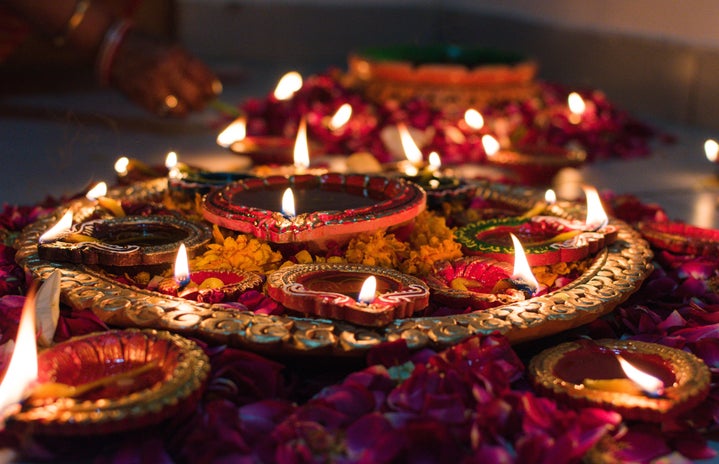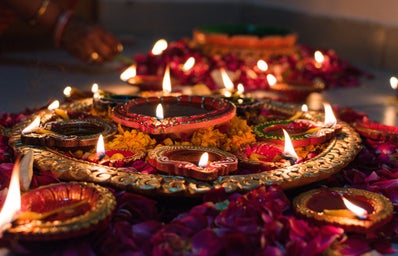As a former Tibetan refugee from India, and now a Canadian-Tibetan citizen; I carry experiences from different cultures as souvenirs. My years in a boarding school in India, from grade 4 to grade 10, provided me with an intimate understanding of Indian culture and its festivities. Among these, Diwali held a special place in my heart.
Diwali transcends religious and ethnic boundaries, symbolising the triumph of good over evil and light over darkness. The anticipation of Diwali was palpable, and the excitement wasn’t limited to just those of Indian descent—it was a celebration that transcended cultural boundaries, and happiness seemed to be contagious. As my friends and I eagerly awaited the festivities, we couldn’t help but indulge in playful speculation, wondering, “Will we get a gulab jamun (Indian sweet) for dessert?”
Diwali, or Deepavali, delivers the message of the triumph of good over evil, and light over darkness. I have noticed that students in India are educated about (their festivities) Diwali along with its celebration.
On Diwali mornings our house parents would give the youngest student in the dormitory a candle and she would light the diya. Diyas are small pots made of clay used as oil lamps. It is an auspicious lamp lit to symbolise goodness, purity and dispelling darkness. We’d shower, braid each other’s hair, and put on a tikka. The bright red dot on our foreheads is a paste made with a variety of ingredients. My dormitory in particular wore tikka made with saffron. Our house parent then dips her finger in the bright red paste and presses it on our foreheads, at the point of Ajna chakra, also known as the third eye. I’d look in the mirror, my eyes glowing from the faith in the bright red mark.
The school corridors turned into a lively canvas of hues and shades. The teachers would wear beautiful attires. It was exciting to see art draped around as clothing. Yellow embroidery on a pink sari, mirror work on my music teacher’s purple sari, and a sparkly white kurta with a red embellished dupatta. It was as though I was peering into a Kaleidoscope.
The evenings of Diwali were my favourite. We gathered to make rangolis. Rangoli from the Sanskrit word रङ्ग translates to “colour”. Rangoli is dyed powder made from flower petals, limestones, rice, and coloured rocks. It is used to decorate the entrance of homes as a welcoming gesture to guests and Lakshmi, the goddess of wealth and good luck.
I remember one Diwali my house parent told us the story about Lord Krishna’s victory over the demon Narakasura. Narakasura was a king drunk on power and authority. He had caused chaos in his kingdom therefore Lord Krishna killed him. My house parent claimed, “Naraksura’s last wish was that the world should rejoice in his death. Therefore Narakachaturdashi day is dedicated to lights and prayers to celebrate a future full of joy.” I later learned it is one of the many Diwali tales in southern India. These stories left me without words, just thoughts and my hands stained with rangoli.
It was only on occasions when we could eat together with boys, therefore girls dressed up to get their crush’s attention. But then we’d see the table lined with aromatic food and forget the presence of boys. In front of us were saag paneer, aloo sabzi, chilli tikka, soft rotis and lemon rice. Warm and lustrous with sunflower oil.
After dinner, we would go to the field to watch the fireworks. The night sky would be ablaze with lights and the rusty sound of bursts. My eyes would reflect the glittering, delving me into the entrance of light and magic. Everything seemed possible.
Now, as a college student, I don’t get to partake in the festivities in the same way but I try to find events held by South-Asian clubs. In high school, my friends and I lit electric diyas, and indulged in Indian sweets.
For college students looking to celebrate Diwali, consider organising a Diwali-themed gathering with friends. Light diyas (electric ones to be safe), prepare or order Indian cuisine, and share stories about the festival’s cultural and spiritual significance with others. It’s a fantastic way to embrace diversity and learn about different traditions.
It is so easy to feel like an outsider when you don’t belong to another person’s culture or can’t fully grasp the traditions and reasons. But sometimes being an outsider, looking from the outside in. It’s so beautiful. This perspective makes me appreciate the distinctness in people and I would love to continually watch, in awe, the wonders within other people.


